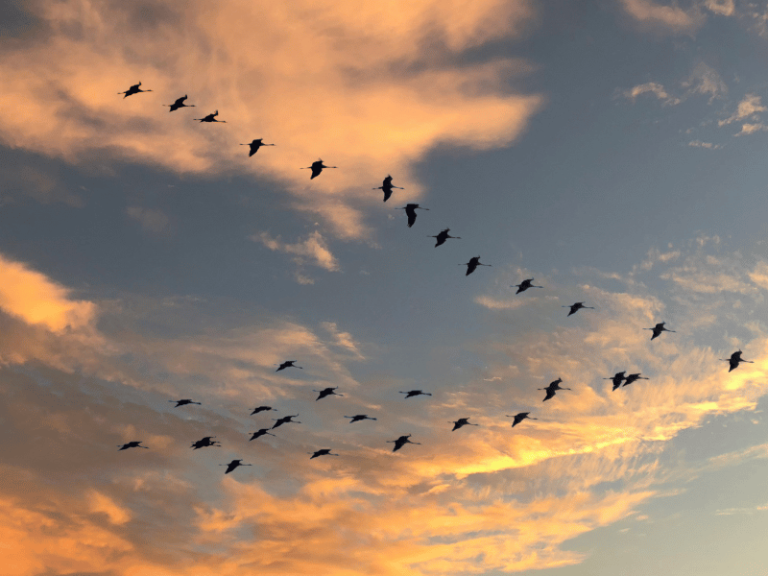The wild geese are migratory birds. Every autumn and winter, they form large flocks and migrate from their native areas in Siberia to southern China to spend the winter.
During their long journey, the formations of goose flocks are highly organized, often flying in a V-shape or l. As they fly, they continuously call out “ya! ya!”.
Why do wild geese make “ya! ya!” calls?
This is a form of communication. They use “ya! ya!” calls to care for each other, to call out, to take off, and to rest.
Wild geese fly at high speeds, covering 69 to 90 kilometers per hour. Despite their speed, their migration journey typically takes one to two months. During long flights, besides flapping their wings, they often glide using rising air currents to conserve energy. When the leading geese flap their wings and create weak updrafts, the geese behind utilize the upward momentum to glide in the high skies. This creates an orderly formation in V-shapes or l lines.
Furthermore, the orderly formations of V-shapes or l lines among wild geese are also a display of collective instinct, advantageous for defending against predators. The flock is usually led by experienced elder geese at the front, while young and weaker birds are positioned in the middle of the formation. When they rest and forage by water, an experienced goose acts as a sentinel. This reduces the risk of solitary geese being preyed upon during migration southward.

